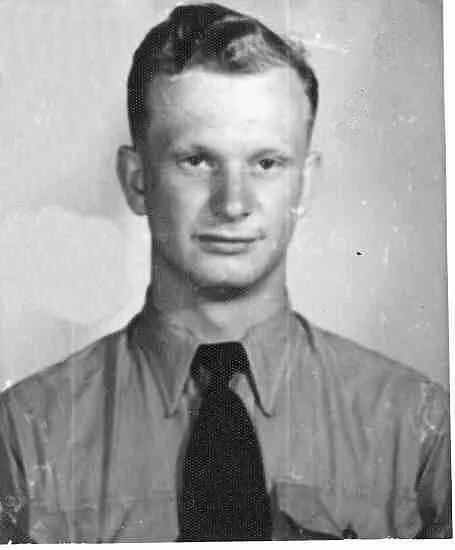North American Harvard NA-26 NA-44

Canadian Warplane Heritage Museum
The North American Harvard appeared in 1937, in response to a US Air Corps proposal for an advanced trainer. The first of 50 Harvard Mk. Is ordered by the Canadian Government were delivered to RCAF Sea Island, BC in July 1939. By early 1940, the Mk. II was being assembled in California with an all metal fuselage replacing the original tube and fabric structure. 1200 Mk. IIs were supplied from US sources, until Canadian built Harvards started being produced in 1941.
In August 1938, Noorduyn Aviation of Montreal farsightedly signed an agreement with North American, to build the Harvard under licence. When the British Commonwealth Air Training Plan (BCATP) came into being in December 1939, Noorduyn received its first orders and went on to produce nearly 2800 Harvard Mk. IIBs for the RCAF and the RAF, between 1940 and 1945. In Canada, Harvard Mk. IIBs were used as advanced trainers with the BCATP at fifteen Service Flying Training Schools across the nation. They helped pilots make to the transition from low powered primary trainers, like Fleet Finch or the de Havilland Tiger Moth, to high performance front line fighters such as the Spitfire.
At the end of WW II, although the RCAF retained the Harvard as a trainer, a large number of them were sold off to civilian operators. The RCAF soon regretted this, for by 1949 the Cold War with the Soviet Union was in full swing and the RCAF urgently needed trainers again. 100 T-6J Texans were leased temporarily from the USAF and a further 270 Harvards, the Mk. IV version, were ordered from Canadian Car & Foundry, Thunder Bay. The RCAF used the Harvard Mk. IV for a further fifteen years, before finally retiring it in 1966.
A total of 20,110 Harvards were built between 1938 and 1954, 3,370 of them in Canada. Countless numbers of privately owned Harvards are still flying today.
Canadian Warplane Heritage Museum's Harvard Mk. IV was built by Canadian Car & Foundry, Thunder Bay, Ontario in late 1951. The aircraft saw service at four RCAF flying schools across the nation until it was sold to a civilian owner in 1965. It was the third aircraft to join the Museum after Dennis Bradley, Alan Ness and John Weir donated it in 1973. Canadian Warplane Heritage Museum
 Wikipedia Harvard Advanced Trainer
Wikipedia Harvard Advanced Trainer
CASPIR Aircraft Groups:
RCAF On Strength (2196), RCAF 400 Squadron (1), Canadian Aircraft Losses (374), RCN On Strength (3)Harvard Mk. II / IIA AJ696
Equipped with Dunlop pneumatic firing gear. Used by No. 31 Service Flying Training School at Kingston, Ontario. Category C damage at Kingston at 05:45 on 21 October 1941 in a landing incident during night training. Category C dmage again at 23:38 on 22 February 1942, and at 01:15 on 25 March 1942. To No. 3 Training Command on 19 February 1944, for records purposes only. To Noorduyn Aviation for crash repairs, 14 April to 29 June 1944. To stored reserve with No. 3 Training Command when completed, issued from storage on 26 July 1944. To No. 1 Air Command on 15 January 1945. To storage on 23 April 1945, stored post war at Dunnville, Ontario. Noted on 7 July 1945 as "frozen series". Intercom installed at No. 6 Repair Depot by 28 August 1947. Reported on 6 January 1948 with 2486:50 time, fitment standard, condition fair. To Canada Car & Foundry for overhaul and modifications, 9 August 1950 to 16 January 1951. To Training Command when completed, for use at RCAF Station Trenton, Ontario. Fitted with gyro gun sight on 14 February 1951, probably redesignated Mk. IIA at this time. To Training Command when completed. Category A crash at Trenton on 30 April 1952, while with Air Armament School. Flying Officer V.H. Morgan killed.
1941-08-25 Taken on Strength No. 1 Training Command 2019-08-20
1941-October-21 Accident: 31 Service Flying Training School Loc: Aerodrome Names: Mclenna
1942-February-22 Accident: 31 Service Flying Training School Loc: Kingston Aerodrome Names: Finlayson | Wright
1942-March-25 Accident: 31 Service Flying Training School Loc: Aerodrome Names: Ogilvie
1942-August-25 Accident: 31 Service Flying Training School Loc: Aerodrome Names: Blake
1943-January-13 Accident: 31 Service Flying Training School Loc: Aerodrome Names: Pullen
1944-April-07 Accident: 31 Service Flying Training School Loc: Aerodrome Names: Mackenzie | Scott | Turner
1952-05-01 Struck off Strength Struck off, reduced to spares and produce 2020-10-27





 Canadian Virtual War Memorial
Canadian Virtual War Memorial Find-A-Grave.com
Find-A-Grave.com Toronto, Ontario
Toronto, Ontario Harvard Advanced Trainer
Harvard Advanced Trainer Harold A Skaarup Web Page
Harold A Skaarup Web Page RCAF.info - RCAF Station Mountain View Ontario Ontario
RCAF.info - RCAF Station Mountain View Ontario Ontario